
Expect the Extraordinary Beethoven’s Pastoral FEBRUARY 22–25, 2024 23 24

THE CLEVELAND ORCHESTRA’S DIGITAL STREAMING SERVICE & APP

Experience The Cleveland Orchestra’s digital platform with new & improved features.

NEW Concert Experiences
Experience on-demand concerts with exclusive interviews and behind-the-scenes features!
Now available: Ravel’s Piano Concerto in G major featuring Víkingur Ólafsson.
NEW Livestreamed Concerts
Enjoy six concerts broadcast live from Severance throughout the 2023 – 24 season.
COMING SOON
Archival Audio Recordings
By popular demand, stream exclusive recordings from The Cleveland Orchestra’s audio archives.
NEW Educational Content
Access videos and learning resources for children, students, and teachers. Visit stream.adella.live/premium or scan the QR code to secure your subscription today!

Questions? Email adellahelp@clevelandorchestra.com or call 216-231-7300
2023/2024 SEASON
JACK, JOSEPH AND MORTON MANDEL CONCERT HALL AT SEVERANCE MUSIC CENTER
Beethoven’s Pastoral
Thursday, February 22, 2024, at 7:30 PM
Friday, February 23, 2024, at 7:30 PM
Saturday, February 24, 2024, at 8 PM
Sunday, February 25, 2024, at 3 PM
Philippe Herreweghe, conductor
Ludwig van Beethoven (1770–1827)
Franz Joseph Haydn (1732–1809)
Overture to Egmont, Op. 84
10 minutes
Cello Concerto No. 1 in C major
I. Moderato
II. Adagio
III. Allegro molto
Jean-Guihen Queyras, cello
25 minutes
20 minutes
Ludwig van Beethoven
Thank you for silencing your electronic devices.
Symphony No. 6 in F major,
40 minutes Op. 68, “Pastoral”
I. Allegro ma non troppo: Awakening of Cheerful Feelings on Arrival in the Country
II. Andante molto mosso: Scene by the Brook
III. Allegro: Merry Gathering of the Countryfolk —
IV. Allegro: Thunderstorm —
V. Allegretto: Shepherd’s Song; Happy and Grateful Feelings after the Storm
Total approximate running time: 1 hour 35 minutes
THE CLEVELAND ORCHESTRA COVER: PHOTO BY MICHIEL HENDRYCKX/COURTESY OF WIKIMEDIA COMMONS
clevelandorchestra.com
INTERMISSION

“We make a living by what we get, but we make a life by what we give.”
— Winston Churchill
When you create your legacy with The Cleveland Orchestra, you make world-class music a way of life in Northeast Ohio for generations to come.
Learn how you can use your assets to plan a thoughtful gift, and make a lasting connection to the music you love.
Katie Shames, JD 216-456-8400 legacy@clevelandorchestra.com
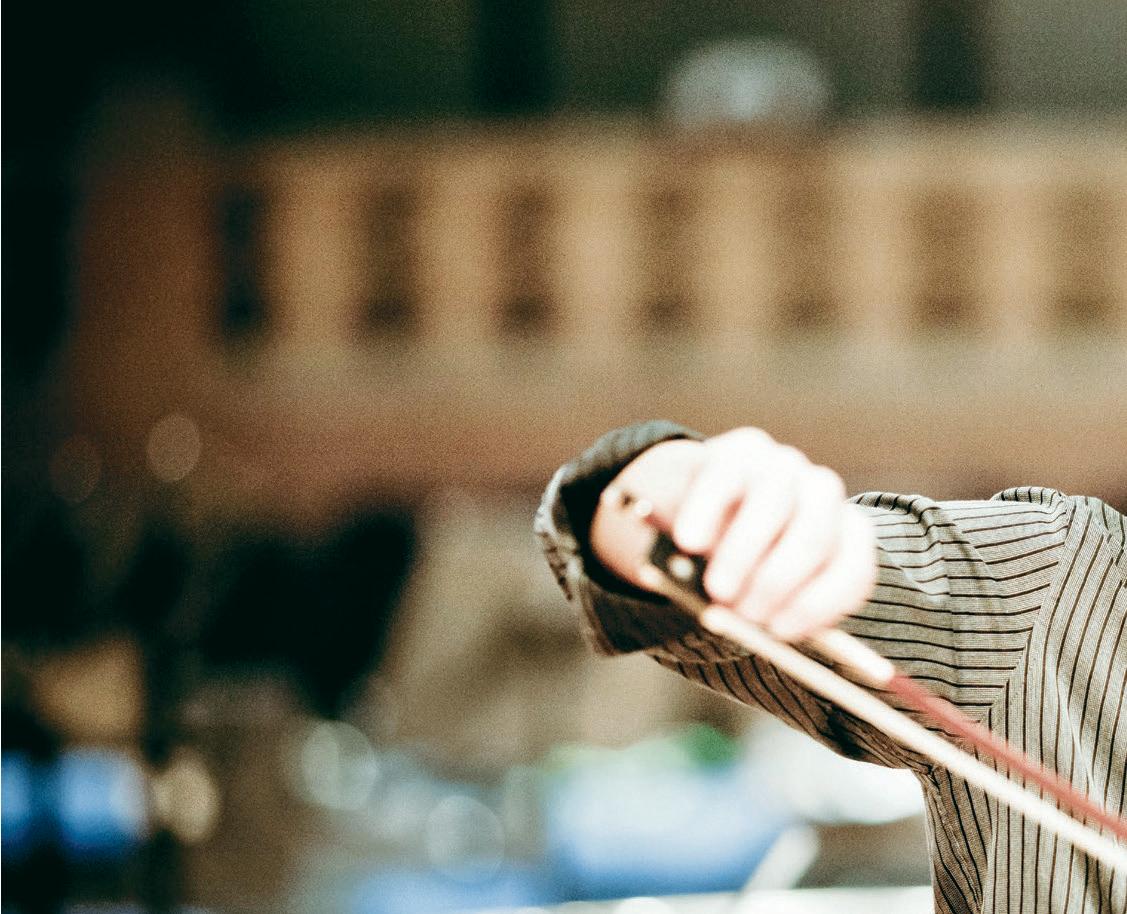


THIS WEEKEND’S GUEST CONDUCTOR Philippe Herreweghe came to the works of Haydn and Beethoven relatively late in his career. “In my case, I am not a traditional conductor. I am self-taught, and I didn’t go through steps normal German conductors would go through,” he said in an interview from 2019.
At age 23, Herreweghe, who is from Belgium, founded the Collegium Vocale Gent, a choir that initially focused on Baroque music. It was only in his 40s that he began to explore masterpieces of the Classical and Romantic eras, employing his historically informed performance practice to works from the late 1700s through the 1800s.
Three works composed from 1762 to 1810 form this weekend’s program: A pair of Beethoven’s middle-period masterpieces bookending Franz Joseph Haydn’s First Cello Concerto. In the concerto (likely written for Joseph Franz Weigl, principal cello in Prince Nikolaus Esterházy’s court), Haydn expands upon Baroque conventions, building fuller and more complex melodic expression that begins to pave a path toward Classicism. French cellist Jean-Guihen Queyras (above), who is equally at home with period ensembles, contemporary music, and collaborations with Iranian zarb players, has been praised by The New York Times for his “sweet and songful” and “vocal quality” in performing this work.
Beethoven was not yet born when the C-major Cello Concerto was written, but he would begin taking lessons from Haydn in the 1790s, at the height of the Classical era. The two works by Beethoven, the Overture to Egmont and his Symphony No. 6, “Pastoral,” came two decades later as the composer helped usher in a new Romanic period. Both works take inspiration from literary sources: The first was composed for a production of Johann Wolfgang von Goethe’s play about Count Egmont’s fight for Dutch independence from Spain in the 1600s; and the latter, a poetic form that dates back to antiquity. But whereas previous works merely described the action, Beethoven imbued his works with the emotions and feelings of his protagonists, bringing an interiority to his compositions that would define this new age.
— Amanda Angel
clevelandorchestra.com | 3 PHOTO BY MARCO BORGGREVE
INTRODUCTION
THE MUSIC
Overture to Egmont, Op. 84
by Ludwig van Beethoven
BORN : December 16, 1770, in Bonn
DIED: March 26, 1827, in Vienna
▶ COMPOSED: 1809–10
▶ WORLD PREMIERE: June 15, 1810, in Vienna, as part of a new production of Goethe’s Egmont
▶ CLEVELAND ORCHESTRA PREMIERE: March 21, 1920, conducted by Music Director Nikolai Sokoloff
▶ ORCHESTRATION: 2 flutes (2nd doubling piccolo), 2 oboes, 2 clarinets, 2 bassoons, 4 horns, 2 trumpets, timpani, and strings
▶ DURATION: about 10 minutes
ACROSS HIS LIFETIME , Beethoven wrote nearly a dozen overtures, some as concert works, others for his only opera (Fidelio), and the rest attached to incidental music for several dramatic stage works. All of them are serious in subject matter. Most of them are related to Beethoven’s lifelong faith in humanity, encompassing its need to both “fight for Good” and for heroes to lead us forward by example or sacrifice.
Beethoven created his overture and incidental music to Johann Wolfgang von Goethe’s play Egmont (1788) at the invitation of the German National Theater in Vienna from 1809 to 1810. (Beethoven’s own First Symphony premiered at this same theater in 1800.) It tells the story of a 16th-century Dutch hero, Lamoral, Count of Egmont, who rallied the populace to fight against Spanish subjugation of the Netherlands. Beethoven
readily agreed to write incidental music for the play’s revival, with the subject matter completely attuned to his own political beliefs in freedom and justice.
The overture, often played by itself in the concert hall, is quintessential Beethoven. Grand chords begin a slow introduction filled with ominous portent. The chords are repeated along with slow melodic themes before a sudden outburst of energy carries us rapidly forward in expectation and anticipation. The musical fight continues, in strong jabs and tuneful stirrings, building and developing not unlike one of Beethoven’s great symphonic movements. Eventually, a climactic and heroic tune calls forth in the brass, carrying the overture to a shining, triumphant finish.
— Eric Sellen
4 | 2023/2024 SEASON
Eric Sellen is The Cleveland Orchestra’s editor emeritus. He previously was program book editor for 28 seasons.

clevelandorchestra.com | 5
IMAGE COURTESY OF WIKIMEDIA COMMONS
Lamoral, Count of Egmont (seen here in a 1564 portrait by an unknown artist) provided inspiration for Goethe’s play and Beethoven’s incidental music.
Cello Concerto No. 1 in C major
by Franz Joseph Haydn
BORN : March 31, 1732, in Rohrau, Austria
DIED: May 31, 1809, in Vienna
▶ COMPOSED: c. 1762–65
▶ WORLD PREMIERE: The concerto was likely performed during Haydn’s lifetime, but the manuscript was lost. Recovered nearly 200 years later, it received its first modern performance on May 19, 1962, in Prague, with cellist Miloš Sádlo and the Czech Radio Symphony conducted by Charles Mackerras.
▶ CLEVELAND ORCHESTRA PREMIERE: March 15, 1966, with soloist Lynn Harrell and conductor Louis Lane
▶ ORCHESTRATION: 2 oboes, 2 horns, and strings, plus solo cello
▶ DURATION: about 25 minutes
OF THE THREE GREAT Viennese classical masters, Haydn had, in general, less interest in the concerto form than either Mozart or Beethoven, yet he was the only one of the three to write works for solo cello and orchestra. The most likely explanation is that Haydn worked closely with many excellent instrumentalists as Kapellmeister to Prince Nikolaus Esterházy and his orchestra and wanted to feature their considerable skills. Concertos were also welcome additions to the programs of the twice-weekly musical “academies,” for which so many of Haydn’s symphonies of this period — often featuring extended, almost concerto-like instrumental solos — were written.
The Concerto in C major, the first of Haydn’s two cello concertos, was written about two decades before its D-major
counterpart. For many years, the C-major work was thought to be lost for good — only its first two measures were inscribed in Haydn’s handwritten catalog of his works. Even more frustrating, the catalog contained not one but a pair of nearly identical incipits, records of the works’ opening measures, for two cello concertos in C major.
Nearly two centuries later in 1961, Czech scholar Oldřich Pulkert discovered a set of parts in Prague that corresponded to one of the two incipits. The concerto was published and immediately taken up by cellists everywhere. As for the other C-major catalog entry, it may be a simple mistake or a discarded variant.
On stylistic grounds, scholars have dated the composition of the C-major
6 | 2023/2024 SEASON THE MUSIC

concerto between 1762 and 1765; it is certainly an early work, from the first years of Haydn’s three-decade-long tenure with Prince Esterházy, spanning 1761 to 1790. It also belongs to the transitional period between Baroque and Classical eras, whose greatest representative, Carl Philipp Emanuel Bach (1714–88), had a strong influence on the young Haydn. The continuity of the rhythmic pulse and the numerous identical repeats of the first movement’s main theme are clear Baroque features, while the shape of the musical gestures points to the emergence of a new style that we now call Classical.
The original cello part shows that the soloist was expected to play along with the orchestra during tutti passages of the entire ensemble, helping to reinforce the bass line. The solo part itself is extremely demanding, with rapid passagework that frequently ascends to the instrument’s high register. The Adagio second movement, in which the winds are silent, calls for an exceptionally beautiful tone and the last movement for uncommon brilliance and stamina. Surely the first cellist of Haydn’s orchestra, Joseph Weigl, must have been one of the outstanding players of his time.
— Peter Laki
Peter
clevelandorchestra.com | 7
This 1791 portrait of Haydn by English artist Thomas Hardy was painted around 30 years after the creation of the composer’s C-major Cello Concerto.
Laki is a musicologist and frequent lecturer on classical music. He is a visiting associate professor of music at Bard College.
IMAGE COURTESY OF WIKIMEDIA COMMONS
Symphony No. 6 in F major, Op. 68, “Pastoral”
by Ludwig van Beethoven
▶ COMPOSED: 1806–08
▶ WORLD PREMIERE: December 22, 1808, in Vienna, conducted by the composer
▶ CLEVELAND ORCHESTRA PREMIERE: December 8, 1922, with Nikolai Sokoloff conducting
▶ ORCHESTRATION: 2 flutes, 2 oboes, 2 clarinets, 2 bassoons, 2 horns, 2 trumpets, 2 trombones, timpani, and strings
▶ DURATION: about 40 minutes
THE “PASTORAL” SYMPHONY caused Hector Berlioz to declare that music, in Beethoven’s hands, had come of age and had finally reached the point where the power of poets such as Virgil and Theocritus to evoke landscape had been conquered by the power of sound.
Composed from 1806 to 1808, it was recognized by Beethoven’s successors as a signpost to the future and the progenitor of a whole genre of music. It gave composers the license to depict not just the natural world but all manner of physical and extra-musical concepts in symphonic language, to the point where program music thereafter dominated the orchestral repertoire for the next 200 years. Beethoven’s evocation of country life in sound has many times been emulated but scarcely ever surpassed.
As in so many of Beethoven’s mighty middle-period works, the Sixth is both conventional and wholly new. The desire
to convey people, places, and things in music was almost an obsession in the previous century, whose composers were no strangers to program music: think of Vivaldi’s The Four Seasons; or the animals that color the pages of Rameau and Haydn. Similarly, the intensely human emotions expressed by Mozart and Gluck are examples of the recurrent belief that instruments can convey the shape, sound, and impressions of the real world. Beethoven inherited that belief and applied it almost mechanically when he came to compose the “Pastoral” Symphony.
At the same time, he gave the genre two profoundly original dimensions by conveying these sights and sounds as “feelings” (the headings of the first and last movements specifically cite “cheerful” or “happy feelings”) and by casting the whole episode as an orchestral symphony. The world of the “Pastoral” is not just any landscape, it is a unique
8 | 2023/2024 SEASON THE MUSIC
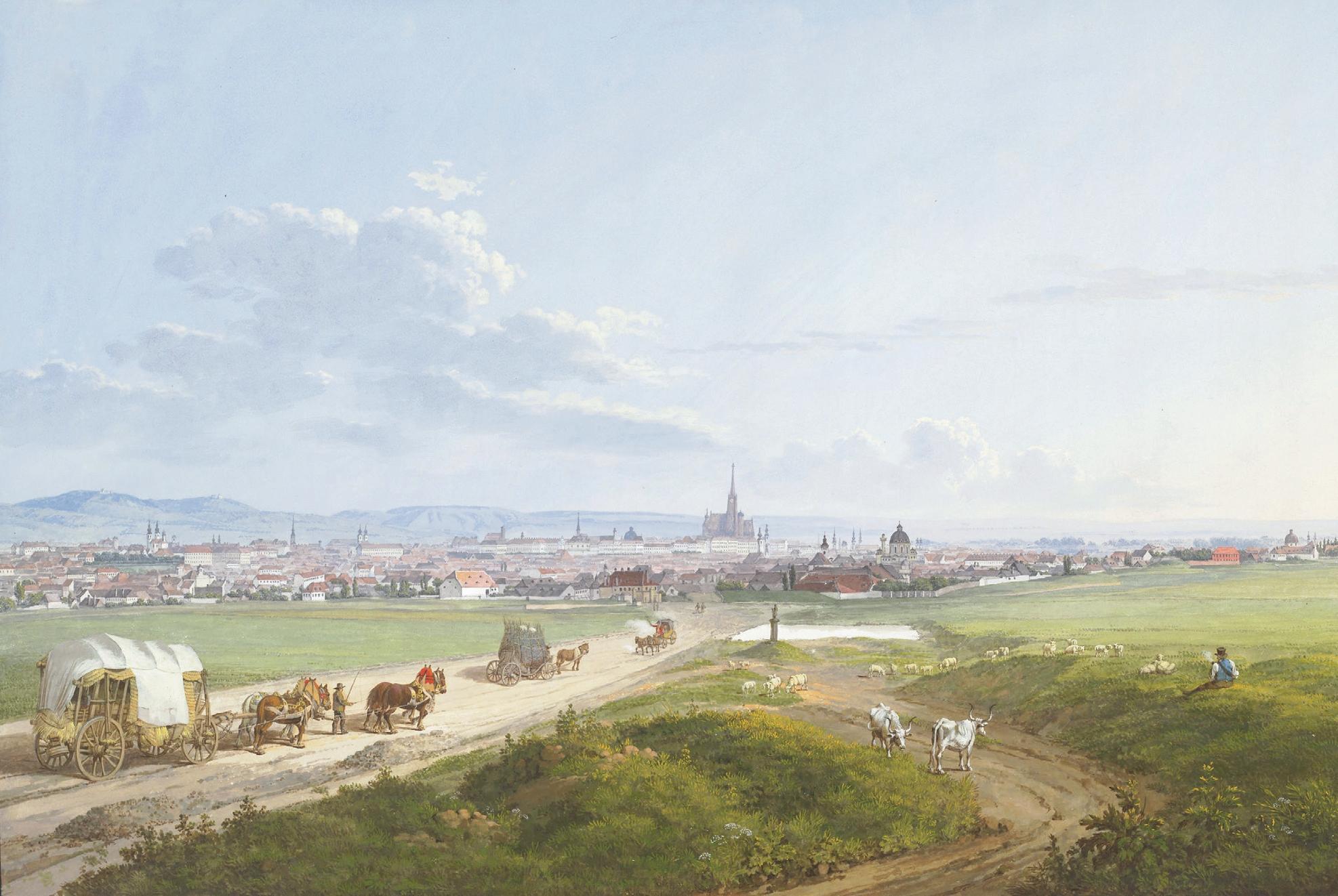
landscape of the composer’s creation. Beethoven frequented and loved the countryside around Vienna, but he is not simply depicting Austrian village life, he is transferring his own response to the country and making something extraordinary out of something ordinary, “more feeling than painting,” as he explained it.
To fashion it as a symphony required Beethoven to step across its familiar limits. Most obviously, he includes five movements, each depicting a scene, when a symphony normally permitted four. The addition of a thunderstorm
occurring between the third-movement scherzo and the finale, leads to the mood of contentment and optimism in which Beethoven always ended his symphonies.
The symphony is not dramatic and knotty, like the famous Fifth, but expansive, in a plain diatonic language that avoids the abrupt dynamics and uneven rhythms of much of his earlier music. Beethoven’s favorite device, an early fermata, momentarily suspends the musical flow in the fourth measure of the work’s opening movement as if to question whether the listener’s attention is truly engaged. Perhaps this makes up for the lack of a slow introduction (as in his First, Second, and Fourth symphonies),
clevelandorchestra.com | 9
IMAGE COURTESY OF WIKIMEDIA COMMONS
Beethoven took frequent strolls in the countryside surrounding Vienna, which Jakob Alt captured in this 1817 painting.
and the main theme of the movement is presented in as simple a fashion as possible at the outset. The movement suggests a leisurely stroll in the most innocent, rustic environment. The development section, in particular, settles into long paragraphs of repeated figures against sustained chords that strikingly anticipate Bruckner’s style.
The “Scene by the Brook” portrays a second movement of magnificent breadth. The water murmurs throughout, and the leisurely unfolding of a full sonata form gives Beethoven space to indulge his command of heavenly melody, a legacy from his earliest years as a composer.
is even more down-to-earth, with an emphatic drone bass and the rambunctious stamping of clogs. Here, two trumpets join the orchestra for the first time in the symphony, lending force and ferocity to the approaching storm. Warnings of heavy raindrops break open with horrifying force as the fourth movement begins. Two trombones join the clamor, and a piccolo whistles for the wind.
The trombones are permitted to join the merry making of the fifth-movement finale, though the piccolo and drums are not. The mood and style hearken back to the first movement, and Beethoven feels no need to step up the pace at the end
[The “Pastoral” Symphony] gave composers the license to depict not just the natural world but all manner of physical and extra-musical concepts in symphonic language …
The delicacy of his orchestration here is especially remarkable, with two cellos singled out to add an extra voice to the string texture and some lovely writing for woodwinds. The end of the slow movement, the most perfect evocation of serenity ever composed, presents three birdcalls: in turn nightingale, quail, and cuckoo. This gives an astonishing jolt to the reverie and falls perilously close to bathos, yet it aptly serves Beethoven’s almost humorous purpose.
The third-movement scherzo is a rustic dance, accompanied by imitations of rustic instruments, and its trio section
to generate any false excitement. The end, in fact, is surprisingly low-key — as country life continues its endless cycle despite the dramatic intervention of the storm. Although just before the end, Beethoven allows the music to rise in a magnificently broad coda, hinting at the chorus “The heavens are telling” from Haydn’s The Creation, and undoubtedly intended to be heard as a thanksgiving to the Almighty.
— Hugh Macdonald
Hugh Macdonald is Avis H. Blewett Professor Emeritus of Music at Washington University in St. Louis. He has written books on Beethoven, Berlioz, Bizet, and Scriabin, as well as Music in 1853: The Biography of a Year
10 | 2023/2024 SEASON
THE MUSIC
PHOTO BY PETER HORREE/ALAMY STOCK PHOTO / THE UFFIZI, FLORENCE
Acclaims of the Ancients

Beethoven’s Sixth Symphony draws upon pastoral imagery popularized by antiquity writers. One is that of the shepherd’s pipes, as shown in this 2nd-century marble sculpture (attributed to Heliodorus of Rhodes) of the Greek god Pan teaching shepherd-poet Daphnis to play the panpipes.
IN HIS “PASTORAL” SYMPHONY , Beethoven draws upon the legacy established by writers from antiquity, such as the Greek poet, Theocritus (c. 300–c. 260 BCE) and the Roman poet, Virgil (70–19 BCE). Both were the ancient masters of bucolic poetry, which established tropes such as the shepherd figure, symbolizing the idealized simplicity of living with nature and harboring a deep admiration for it.
The first instance of the pastoral genre, as well as the trope of the shepherd, comes from Theocritus’s series of poems, the Εἰδύλλια (Idylls). In this work, Theocritus — the inventor of this genre — introduces the original shepherdpoet, Daphnis, who was taught to play the panpipes by Pan and lost his life due to unrequited love. Daphnis (who has inspired musical works from Rameau to Ravel) shows up in the first and sixth Idylls. As with Theocritus, Virgil’s Eclogues, consisting of 10 poems, also incorporate song into poetry: the second and eighth feature love serenades and the third and seventh depict singing contests.
We see these influences come to fruition in the fifth movement of Beethoven’s “Pastoral” Symphony. Aptly named, the fifth movement’s “Shepherd’s Song” represents an essential aspect of bucolic poetry, the sound of a shepherd’s pipes (alternately heard in the clarinet and the horn) that resonates with the emotions that nature evokes — in this case, thanksgiving after the violent storm heard in the previous movement. With two lengthy swells in the fifth movement, we find ourselves immersed in the shepherd’s burgeoning love and gratitude for nature, even when destructive.
— Silvana Corrales Cantelmi
clevelandorchestra.com | 11
Silvana Corrales Cantelmi is an intern with The Cleveland Orchestra and is currently a BA candidate in classics and world literature at Case Western Reserve University.

1066807_Cleveland Orchestra_Week 13.single_sw
MICHIEL HENDRYCKX
PHOTO
THE CONDUCTOR
Philippe Herreweghe
Conductor Philippe Herreweghe’s energetic, authentic, and rhetorical approach to music draws praise worldwide. After studying music in Ghent, Belgium, he founded several ensembles with whom he has made historically appropriate and well-thought-out interpretations of repertoire stretching from the Renaissance to contemporary music. They include Collegium Vocale Gent, La Chapelle Royale, Ensemble Vocal Européen, and Orchestre des ChampsÉlysées, which plays pre-Romantic and Romantic repertoire on original instruments. Last season Herreweghe, together with soloists Magdalena Kožená and Andrew Staples, presented a historically informed performance of Mahler’s Das Lied von der Erde.
Highlights of the 2023–24 season include guest appearances with The Cleveland Orchestra, Munich Philharmonic, Rundfunk-Sinfonieorchester Berlin, and Philharmonia Orchestra. Together with the Collegium Vocale Gent and Orchestre des Champs-Élysées, he tours Europe with Mozart’s Requiem. In addition, Herreweghe presents J.S. Bach’s Mass in B minor at Europe’s leading festivals and conducts the St. Matthew Passion in Katowice, Hamburg, and Munich, among other venues.
In September 2021, Herreweghe returned to Musikfest Bremen for concerts with Orchestre des Champs-Élysées and Collegium Vocale Gent. Having made his Musikfest debut in 1996 with the choir
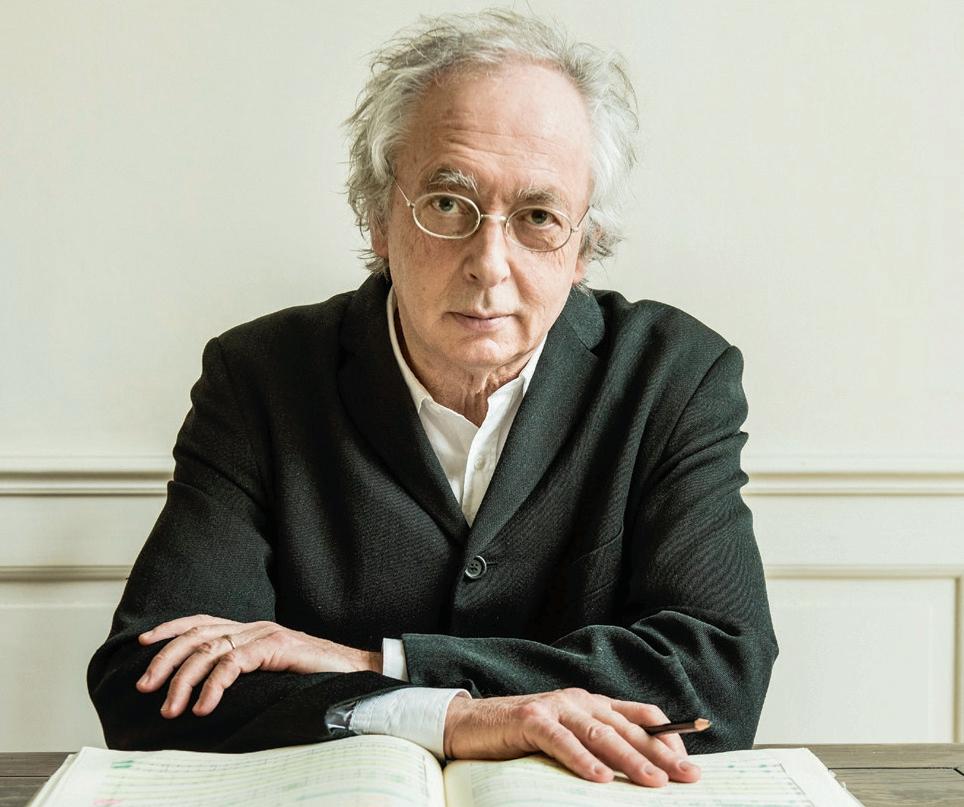
and orchestra of the Collegium Vocale Gent, he was honored in 2021 with the Musikfest Award Bremen for his outstanding artistic work. That same year, Herreweghe was awarded the “Ultima” prize for General Cultural Merit by the Flemish government.
Herreweghe has received numerous awards for his consistent artistic imagination and commitment. In 1990, the European music press named him Musical Personality of the Year. Herreweghe and Collegium Vocale Gent were appointed Cultural Ambassadors of Flanders in 1993. A year later, he was awarded the Belgian order of Officier des Arts et Lettres, and in 1997, he was awarded an honorary doctorate from the Catholic University of Leuven. In 2003, he received the French title Chevalier de la Légion d’Honneur. In 2010, the city of Leipzig awarded him its Bach-Medaille for his great service as a performer of Bach. In 2017, Herreweghe received an honorary doctorate from Ghent University.
clevelandorchestra.com | 13
BY






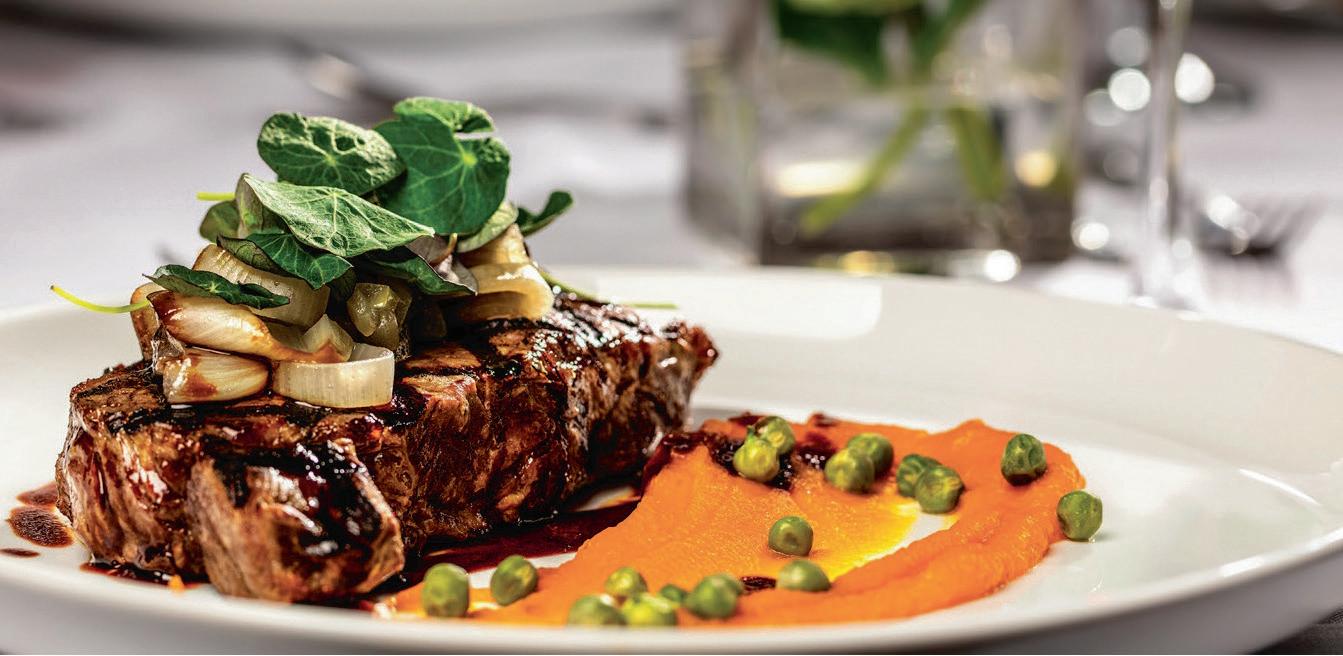

EXPLORE LUXURY SENIOR LIVING IN SHAKER HEIGHTS SHAKER HEIGHTS | (216) 677-4484
THE ARTIST
Jean-Guihen Queyras cello
Curiosity, diversity, and a firm focus on music itself characterize the artistic work of Jean-Guihen Queyras. His approaches to early music — as in his collaborations with the Freiburg Baroque Orchestra and the Akademie für Alte Musik Berlin — and contemporary music are equally thorough.
He has given world premieres of works by Johannes Maria Staud, Thomas Larcher, and Tristan Murail.
In 2014, he marked Peter Eötvös’s 70th birthday by recording his Cello Concerto with the composer conducting, and enjoyed a long artistic partnership with the composer-conductor Pierre Boulez
Queyras was a founding member of the Arcanto Quartet and forms a celebrated trio with Isabelle Faust and Alexander Melnikov. He has also collaborated with zarb specialists Bijan and Keyvan Chemirani on a Mediterranean program.
Queyras has been invited to be an artist in residence at the Concertgebouw Amsterdam, Festival d’Aix-en-Provence, and the Orchestre Philharmonique de Strasbourg, among others. He appears with renowned orchestras such as The Philadelphia Orchestra, Orchestre de Paris, London Symphony Orchestra, and Gewandhausorchester.
Queyras’s discography includes critically acclaimed recordings of concertos by Edward Elgar, Antonín Dvořák, Philippe Schoeller, and Gilbert Amy; Robert Schumann’s piano trios with
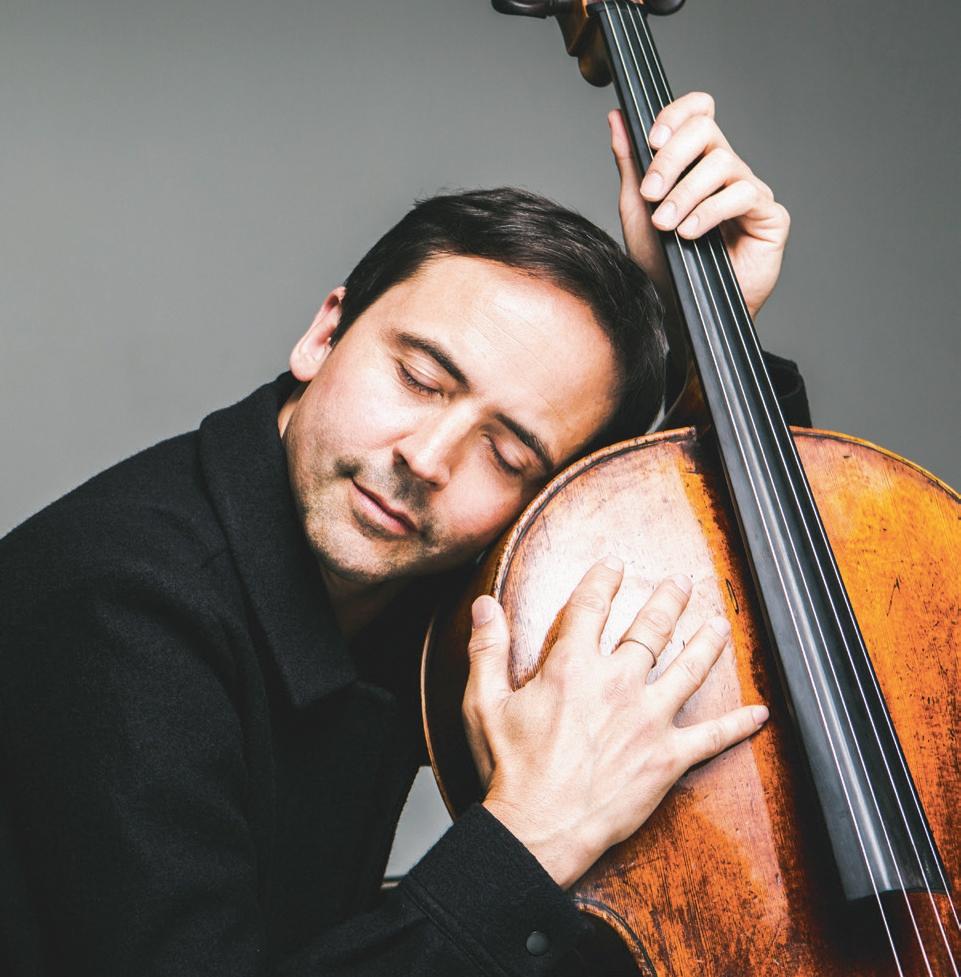
Faust and Melnikov; and Schumann’s Cello Concerto with the Freiburg Baroque Orchestra under Pablo Heras-
Casado. Thrace: Sunday Morning Sessions, recorded in collaboration with the Chemirani brothers and Sokratis Sinopoulos, explores the intersections of contemporary music, improvisation, and Mediterranean traditions. Queyras records exclusively for Harmonia Mundi.
Highlights of the 2023–24 season include concert tours of Australia, the US, Canada, and Europe; performances with the Rosas Dance Company and Anne Teresa de Keersmaeker, appearances with the Philharmonia Orchestra, Orquesta Nacional de España, and The Cleveland Orchestra; as well as chamber music concerts with Alexandre Tharaud, Kristian Bezuidenhout, Tabea Zimmermann, and the Belcea Quartet.
Queyras holds a professorship at the University of Music Freiburg and is artistic director of the Rencontres Musicales de Haute-Provence festival in Forcalquier. He plays a 1696 cello by Gioffredo Cappa, made available to him by the Mécénat Musical Société Générale.
clevelandorchestra.com | 15 PHOTO BY ANDY STAPLES



34300 Solon Road | Solon, OH | 440-248-2424 | 800-260-2949 One block south of Rt. 422 & SOM Center Road 10-8 M/Th | 10-5:30 Tu/W/F/Sa | www.sedlakinteriors.com Complimentary Delivery and Set-Up Within 60 Miles. CELEBRATING




Mike Giarrizzo Sr. web: ljicollisioncenter.com BW Voice Performance presents: The Merry Widow BW Gamble Auditorium Fri, March 22 and Sat, March 23 at 8pm; Sat, March 23 and Sun, March 24 at 3pm bw.edu/tickets We’ve Got Our Eye On You 1st place National Opera Association “2022-2023 Opera Production Competition” Operas [in Place] 1st place OPERA America “2023 Awards for Digital Excellence in Opera” We’ve Got Our Eye On You BWVP Winter 2023 CLEVELANDORCHESTRA.COM/REWARDS | 216-231-1111 THE PLACE FOR FANS OF THE CLEVELAND ORCHESTRA EARN POINTS • Attend concerts • Watch videos • Answer quizzes • Give feedback GET REWARDS • Seat upgrades & exclusive content • FREE season of Adella with 3000 Rewards points • VIP experiences & more JOIN NOW Log in to your account at my.clevelandorchestra.com and click “Rewards” LJI builds con dence in every customer and ensures quality repairs and superior customer service. Our commitment is to achieve and retain customer loyalty for life! 27100 Chagrin Blvd. at I-271 Orange Village (216)364-7100 1640 Lee Rd. at Mayfield Cleveland Hts. (216) 932-7100 TWO LOCATIONS Customer Con dence – Priority One™ ljicollisioncenter.com Customer Confidence –Lauren Angie Jill Strauss fourth generation in the industry LJI builds confidence in every customer and ensures quality repairs and superior customer service. Our commitment is to achieve and retain customer loyalty for life! 27100 Chagrin Blvd. 1640 Lee Rd. NOW TWO LOCATIONS



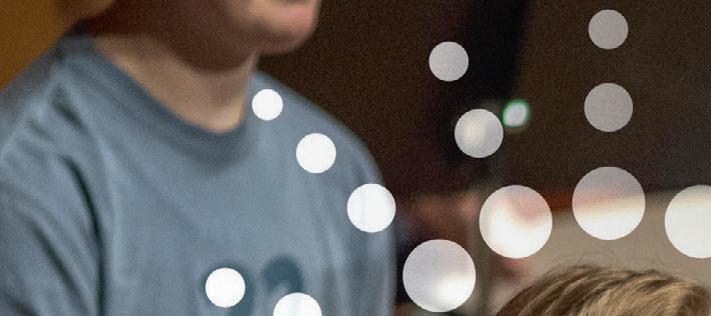


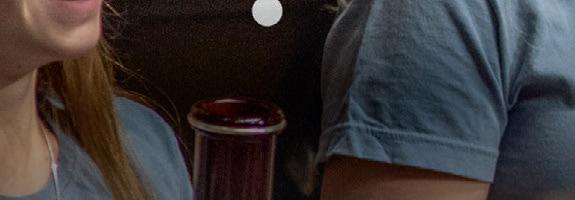


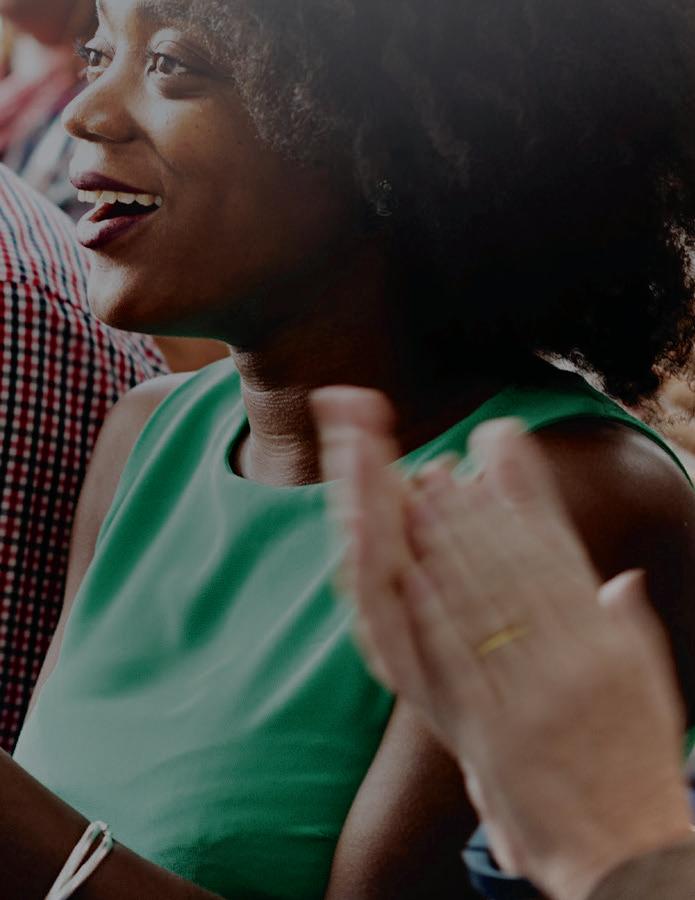















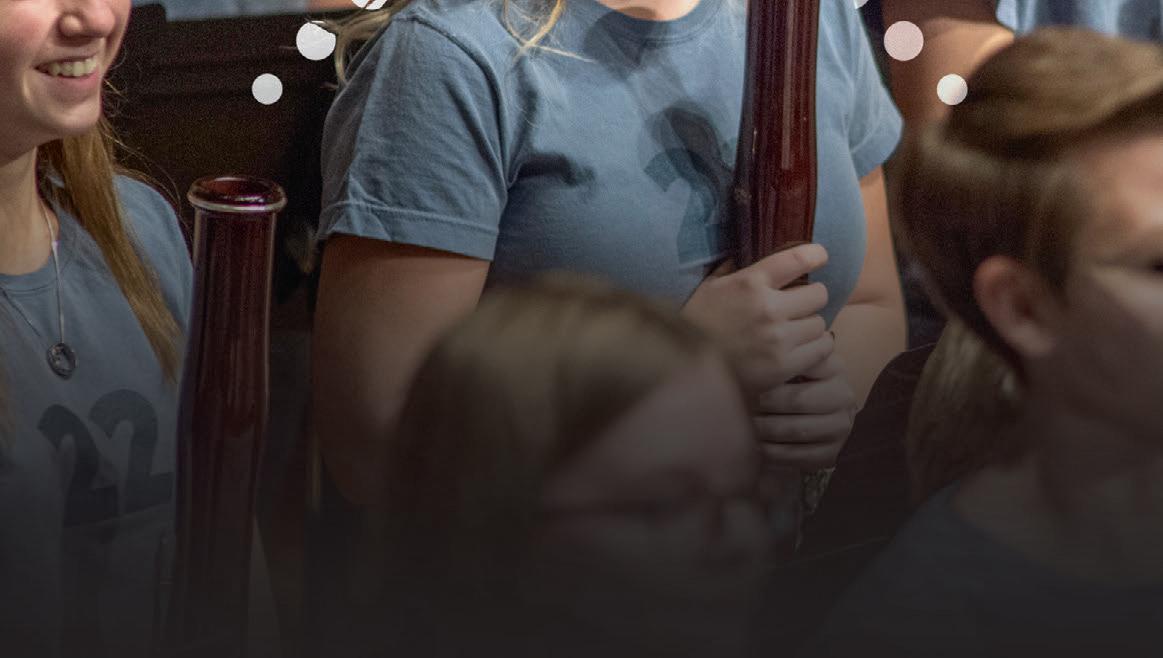












Contemporary Youth Orchestra ROB ER T MULLE R I F YO U’ RE LO OK ING TO create something magical. E P L R E N L I NE Cl evel a nd Ar ts Event s .com connects you to the region’s vibrant arts and culture scene With just a few clicks, discover hundreds of events made possible in
with public funding from Cuyahoga Arts & Culture.
part
ABOUT THE CLEVELAND ORCHESTRA
NOW IN ITS SECOND CENTURY ,
The Cleveland Orchestra, under the leadership of Music Director Franz Welser-Möst since 2002, is one of the most sought-after performing ensembles in the world. Year after year, the ensemble exemplifies extraordinary artistic excellence, creative programming, and community engagement. The New York Times has called Cleveland “the best in America” for its virtuosity, elegance of sound, variety of color, and chamber-like musical cohesion.
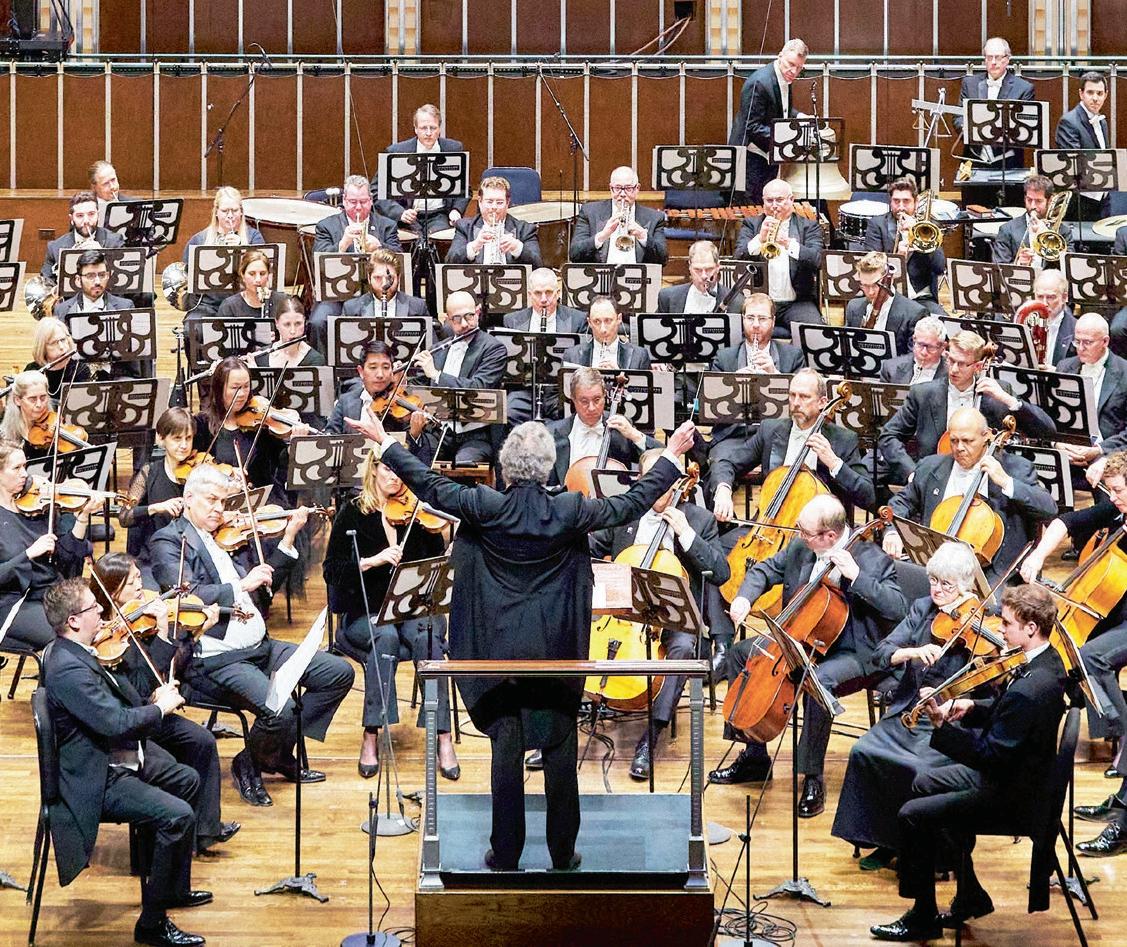
Founded by Adella Prentiss Hughes, the Orchestra performed its inaugural concert in December 1918. By the middle of the century, decades of growth and sustained support had turned it into one of the most admired globally.
The past decade has seen an increasing number of young people attending concerts, bringing fresh attention to The Cleveland Orchestra’s legendary sound and committed programming. More recently, the Orchestra launched several bold digital projects, including the streaming platform Adella, the podcast On a Personal Note, and its own recording label, a new chapter in the Orchestra’s long and distinguished recording and broadcast history. Together, they have captured the Orchestra’s unique artistry and the musical achievements of the Welser-Möst and Cleveland Orchestra partnership.
The 2023 – 24 season marks Franz Welser-Möst’s 22nd year as music director, a period in which The Cleveland Orchestra earned unprecedented acclaim around the world, including a series of residencies at the Musikverein in Vienna, the first of its kind by an American orchestra, and a number of acclaimed opera presentations.
Since 1918, seven music directors — Nikolai Sokoloff, Artur Rodziński, Erich Leinsdorf, George Szell, Lorin Maazel, Christoph von Dohnányi, and Franz Welser-Möst — have guided and shaped the ensemble’s growth and sound. Through concerts at home and on tour, broadcasts, and a catalog of acclaimed recordings, The Cleveland Orchestra is heard today by a growing group of fans around the world.


clevelandorchestra.com | 19
@ClevelandOrchestra @clevelandorchestra @CleveOrchestra @Cleveorch PHOTO BY ROGER
MASTROIANNI
THE CLEVELAND ORCHESTRA
Franz Welser-Möst, Music Director
KELVIN SMITH FAMILY CHAIR
FIRST VIOLINS
David Radzynski
CONCERTMASTER
Blossom-Lee Chair
Jung-Min Amy Lee
ASSOCIATE
CONCERTMASTER
Gretchen D. and Ward Smith
Chair
Jessica Lee
ASSISTANT
CONCERTMASTER
Clara G. and George P.
Bickford Chair
Stephen Tavani
ASSISTANT
CONCERTMASTER
Dr. Ronald H. Krasney Chair
Wei-Fang Gu
Drs. Paul M. and Renate H.
Duchesneau Chair
Kim Gomez
Elizabeth and Leslie
Kondorossy Chair
Chul-In Park
Harriet T. and David L. Simon Chair
Miho Hashizume
Theodore Rautenberg Chair
Jeanne Preucil Rose
Larry J.B. and Barbara S. Robinson Chair
Alicia Koelz
Oswald and Phyllis Lerner
Gilroy Chair
Yu Yuan
Patty and John Collinson
Chair
Isabel Trautwein
Trevor and Jennie Jones Chair
Katherine Bormann
Analisé Denise Kukelhan
Gladys B. Goetz Chair
Zhan Shu
Youngji Kim
Genevieve Smelser
SECOND VIOLINS
Stephen Rose*
Alfred M. and Clara T. Rankin Chair
Jason Yu2
James and Donna Reid Chair
Eli Matthews1
Patricia M. Kozerefski and Richard J. Bogomolny Chair
Sonja Braaten Molloy
Carolyn Gadiel Warner
Elayna Duitman
Ioana Missits
Jeffrey Zehngut
Sae Shiragami
Kathleen Collins
Beth Woodside
Emma Shook
Dr. Jeanette Grasselli Brown and Dr. Glenn R. Brown Chair
Yun-Ting Lee
Jiah Chung Chapdelaine
Liyuan Xie
VIOLAS
Wesley Collins*
Chaillé H. and Richard B.
Tullis Chair
Stanley Konopka2
Mark Jackobs
Jean Wall Bennett Chair
Lisa Boyko
Richard and Nancy
Sneed Chair
Richard Waugh
Lembi Veskimets
The Morgan Sisters Chair
Eliesha Nelson
Anthony and Diane
Wynshaw-Boris Chair
Joanna Patterson Zakany
William Bender
Gareth Zehngut
CELLOS
Mark Kosower*
Louis D. Beaumont Chair
Richard Weiss1
The GAR Foundation Chair
Charles Bernard2
Helen Weil Ross Chair
Bryan Dumm
Muriel and Noah Butkin Chair
Tanya Ell
Thomas J. and Judith Fay
Gruber Chair
Ralph Curry
Brian Thornton
William P. Blair III Chair
David Alan Harrell
Martha Baldwin
Dane Johansen
Paul Kushious
BASSES
Maximilian Dimoff*
Clarence T. Reinberger Chair
Derek Zadinsky2
Charles Paul1
Mary E. and F. Joseph Callahan Chair
Mark Atherton
Thomas Sperl
Henry Peyrebrune
Charles Barr Memorial Chair
Charles Carleton
Scott Dixon
HARP
Trina Struble*
Alice Chalifoux Chair
FLUTES
Joshua Smith*
Elizabeth M. and William C. Treuhaft Chair
Saeran St. Christopher
Jessica Sindell2
Austin B. and Ellen W. Chinn Chair
Mary Kay Fink
PICCOLO
Mary Kay Fink
Anne M. and M. Roger Clapp Chair
OBOES
Frank Rosenwein*
Edith S. Taplin Chair
Corbin Stair
Sharon and Yoash Wiener Chair
Jeffrey Rathbun2
Everett D. and Eugenia S. McCurdy Chair
Robert Walters
ENGLISH HORN
Robert Walters
Samuel C. and Bernette K. Jaffe Chair
CLARINETS
Afendi Yusuf*
Robert Marcellus Chair
Robert Woolfrey
Victoire G. and Alfred M. Rankin, Jr. Chair
Daniel McKelway2
Robert R. and Vilma L. Kohn Chair
Amy Zoloto
E-FLAT CLARINET
Daniel McKelway
Stanley L. and Eloise M.
Morgan Chair
BASS CLARINET
Amy Zoloto
Myrna and James Spira Chair
BASSOONS
John Clouser*
Louise Harkness Ingalls Chair
Gareth Thomas
Barrick Stees2
Sandra L. Haslinger Chair
Jonathan Sherwin
CONTRABASSOON
Jonathan Sherwin
HORNS
Nathaniel Silberschlag*
George Szell Memorial Chair
Michael Mayhew§
Knight Foundation Chair
Jesse McCormick
Robert B. Benyo Chair
Hans Clebsch
Richard King
Meghan Guegold Hege
20 | 2023/2024 SEASON

TRUMPETS
Michael Sachs*
Robert and Eunice Podis
Weiskopf Chair
Jack Sutte
Lyle Steelman2
James P. and Dolores D. Storer Chair
Michael Miller
CORNETS
Michael Sachs*
Mary Elizabeth and G. Robert Klein Chair
Michael Miller
TROMBONES
Brian Wendel*
Gilbert W. and Louise I.
Humphrey Chair
Richard Stout
Alexander and Marianna C. McAfee Chair
Shachar Israel2
BASS TROMBONE
Luke Sieve
EUPHONIUM & BASS TRUMPET
Richard Stout
TUBA
Yasuhito Sugiyama*
Nathalie C. Spence and Nathalie S. Boswell Chair
TIMPANI
vacant
PERCUSSION
Marc Damoulakis*
Margaret Allen Ireland Chair
Thomas Sherwood
Tanner Tanyeri
KEYBOARD INSTRUMENTS
Carolyn Gadiel Warner
Marjory and Marc L.
Swartzbaugh Chair
clevelandorchestra.com
LIBRARIANS
Michael Ferraguto
Joe and Marlene Toot Chair
Donald Miller
ENDOWED CHAIRS CURRENTLY UNOCCUPIED
Elizabeth Ring and William Gwinn Mather Chair
Virginia M. Linsdseth, PhD, Chair
Paul and Lucille Jones Chair
Charles M. and Janet G. Kimball Chair
Sunshine Chair
Otto G. and Corinne T. Voss Chair
Mr. and Mrs. Richard K. Smucker Chair
Rudolf Serkin Chair
CONDUCTORS
Christoph von Dohnányi
MUSIC DIRECTOR LAUREATE
Daniel Reith
ASSISTANT CONDUCTOR
Sidney and Doris Dworkin Chair
Lisa Wong
DIRECTOR OF CHORUSES
Frances P. and Chester C. Bolton Chair
* Principal
§ Associate Principal
1 First Assistant Principal
2 Assistant Principal
This roster lists full-time members of The Cleveland Orchestra. The number and seating of musicians onstage varies depending on the piece being performed. Seating within the string sections rotates on a periodic basis.
| 21
PHOTO BY ROGER MASTROIANNI
THE 2023/2024 SEASON CALENDAR
Pre-concert lectures are held in Reinberger Chamber Hall one hour prior to the performance.
WINTER
FEB 22 – 25
BEETHOVEN’S PASTORAL
Philippe Herreweghe, conductor
Jean-Guihen Queyras, cello
BEETHOVEN Overture to Egmont
HAYDN Cello Concerto No. 1
BEETHOVEN Symphony No. 6, “Pastoral”
Pre-concert lecture by David Rothenberg
FEB 29 – MAR 2
KANNEH-MASON PLAYS SCHUMANN
Susanna Mälkki, conductor
Isata Kanneh-Mason, piano
J.S. BACH/WEBERN Ricercare from Musical Offering *
C. SCHUMANN Piano Concerto
HINDEMITH Mathis der Maler
Symphony
Pre-concert lecture by Eric Charnofsky
MAR 7 – 9
BRAHMS’S FOURTH SYMPHONY
Fabio Luisi, conductor
Mary Kay Fink, piccolo
WEBER Overture to Oberon
ODED ZEHAVI Aurora
BRAHMS Symphony No. 4
Pre-concert lecture by Francesca Brittan
MAR 10
RECITAL
Chopin & Schubert
Yefim Bronfman, piano
SCHUBERT Piano Sonata No. 14
R. SCHUMANN Carnival Scenes from Vienna
CHOPIN Piano Sonata No. 3
MAR 14, 16 & 17
LEVIT PLAYS MOZART
Franz Welser-Möst, conductor
Igor Levit, piano
MOZART Piano Concerto No. 27
BRUCKNER Symphony No. 4, “Romantic”
Pre-concert lecture by Cicilia Yudha
SPRING
MAR 21 – 23
SIBELIUS’S SECOND SYMPHONY
Dalia Stasevska, conductor
Josefina Maldonado, mezzo-soprano
RAUTAVAARA Cantus Arcticus
PERRY Stabat Mater
SIBELIUS Symphony No. 2
Pre-concert lecture by Kevin McBrien
APR 4 & 6
CITY NOIR
John Adams, conductor
James McVinnie, organ
Timothy McAllister, saxophone
GABRIELLA SMITH Breathing Forests
DEBUSSY Prelude to the Afternoon of a Faun
JOHN ADAMS City Noir
Pre-concert lecture by Eric Charnofsky
APR 11 – 13
ELGAR’S CELLO CONCERTO
Klaus Mäkelä, conductor
Sol Gabetta, cello
Thomas Hampson, baritone *
The Cleveland Orchestra Chorus *
JIMMY LÓPEZ BELLIDO Perú negro
ELGAR Cello Concerto
WALTON Belshazzar’s Feast *
Pre-concert lecture by James Wilding
clevelandorchestra.com For tickets & more information visit:
APR 14
RECITAL
Schumann & Brahms
Evgeny Kissin, piano
Matthias Goerne, baritone
R. SCHUMANN Dichterliebe
BRAHMS Four Ballades, Op. 10
BRAHMS Selected Songs
APR 18 – 20
YUJA WANG PLAYS
RAVEL & STRAVINSKY
Klaus Mäkelä, conductor
Yuja Wang, piano
RAVEL Concerto for the Left Hand
STRAVINSKY Concerto for Piano and Wind Instruments
STRAVINSKY The Rite of Spring
Pre-concert lecture by Caroline Oltmanns
APR 26 – 28
RACHMANINOFF’S SECOND PIANO CONCERTO
Lahav Shani, conductor
Beatrice Rana, piano
UNSUK CHIN subito con forza
RACHMANINOFF Piano Concerto No. 2
BARTÓK Concerto for Orchestra
Pre-concert lecture by James O’Leary
MAY 2 – 4
LANG LANG PLAYS SAINT-SAËNS
Franz Welser-Möst, conductor
Lang Lang, piano *
SAINT-SAËNS Piano Concerto No. 2 *
BERLIOZ Symphonie fantastique
Pre-concert lecture by Caroline Oltmanns
* Not performed on the Friday matinee concert
MAY 16, 18, 24 & 26
MOZART’S MAGIC FLUTE
Franz Welser-Möst, conductor
Nikolaus Habjan, director
Julian Prégardien, tenor
Ludwig Mittelhammer, baritone
Christina Landshamer, soprano
The Cleveland Orchestra Chorus
MOZART The Magic Flute
Staged production sung in German with projected supertitles
MAY 23 & 25
MOZART’S GRAN PARTITA
Franz Welser-Möst, conductor
Leila Josefowicz, violin
Trina Struble, harp
WAGNER Prelude and Liebestod from Tristan und Isolde
JÜRI REINVERE Concerto for Violin and Harp
MOZART Serenade No. 10, “Gran Partita”
Pre-concert lecture by Michael Strasser
YOUR VISIT
HEALTH & SAFETY
The Cleveland Orchestra is committed to creating a comfortable, enjoyable, and safe environment for all guests at Severance Music Center. While mask and COVID-19 vaccination are recommended they are not required. Protocols are reviewed regularly with the assistance of our Cleveland Clinic partners; for up-to-date information, visit: clevelandorchestra. com/attend/health-safety
LATE SEATING
As a courtesy to the audience members and musicians in the hall, late-arriving patrons are asked to wait quietly until the first convenient break in the program. These seating breaks are at the discretion of the House Manager in consultation with the performing artists.
PAGERS, CELL PHONES & WRISTWATCH ALARMS
As a courtesy to others, please silence all devices prior to the start of the concert.
PHOTOGRAPHY, VIDEOGRAPHY & RECORDING
Audio recording, photography, and videography are prohibited during performances at Severance. Photographs can only be taken when the performance is not in progress.
HEARING AIDS & OTHER HEALTH-ASSISTIVE DEVICES
For the comfort of those around you, please reduce the volume on hearing aids and other devices that may produce a noise that would detract from the program. For Infrared Assistive-Listening Devices, please see the House Manager or Head Usher for more details.
IN THE EVENT OF AN EMERGENCY
Contact an usher or a member of house staff if you require medical assistance. Emergency exits are clearly marked throughout the building. Ushers and house staff will provide instructions in the event of an emergency.
AGE RESTRICTIONS
Regardless of age, each person must have a ticket and be able to sit quietly in a seat throughout the performance. Classical Season subscription concerts are not recommended for children under the age of 8. However, there are several age-appropriate series designed specifically for children and youth, including Music Explorers (for 3 to 6 years old) and Family Concerts (for ages 7 and older).
The Cleveland Orchestra is grateful to the following organizations for their ongoing generous support of The Cleveland Orchestra: the State of Ohio and Ohio Arts Council and to the residents of Cuyahoga County through Cuyahoga Arts and Culture.
Cleveland Orchestra performances are broadcast as part of regular programming on ideastream/WCLV Classical 90.3 FM, Saturdays at 8 PM and Sundays at 4 PM.
The Cleveland Orchestra is proud of its long-term partnership with Kent State University, made possible in part through generous funding from the State of Ohio.
The Cleveland Orchestra is proud to have its home, Severance Music Center, located on the campus of Case Western Reserve University, with whom it has a long history of collaboration and partnership.
© 2024 The Cleveland Orchestra and the Musical Arts Association Program books for Cleveland Orchestra concerts are produced by The Cleveland Orchestra and are distributed free to attending audience members.
EDITORIAL
Kevin McBrien, The Cleveland Orchestra kmcbrien@clevelandorchestra.com
DESIGN
Elizabeth Eddins, Eddinsdesign eddinsdesign@gmail.com
24 | 2023/2024 SEASON clevelandorchestra.com
ADVERTISING Live Publishing Company, 216-721-1800 Download today for instant, secure, and paperless access to your concert tickets. For more information and direct links to download, visit clevelandorchestra.com/ticketwallet or scan the code with your smartphone camera to download the app for iPhone or Android. Available for iOS and Android on Google Play and at the Apple App Store. FREE MOBILE APP TICKET WALLET
Passions Life’s
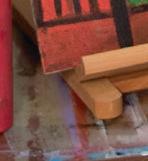




Pauline has always been passionate about educating and giving people the tools needed to succeed. As a professor, analyst, Certified Financial Planner and recent Crain’s Eight Over 80 honoree, she has impacted many and continues to inspire and inform as a volunteer and philanthropist.
Bringing Independent Living to Life.
At Judson, independent living is all about enjoying the comforts of home in a vibrant, maintenance-free retirement community. Residents take advantage of diverse, enriching programs that cultivate new friendships, maintain wellness, fuel creativity and ignite new interests. Seniors define an inspirational way of living with peace of mind that comes with access to staff members 24 hours a day should help be needed. Visit us to see how we bring independent living to life.
PHOTO CREDITS XXXX LIVING YOUR
(216)791-2436 judsonsmartliving.org
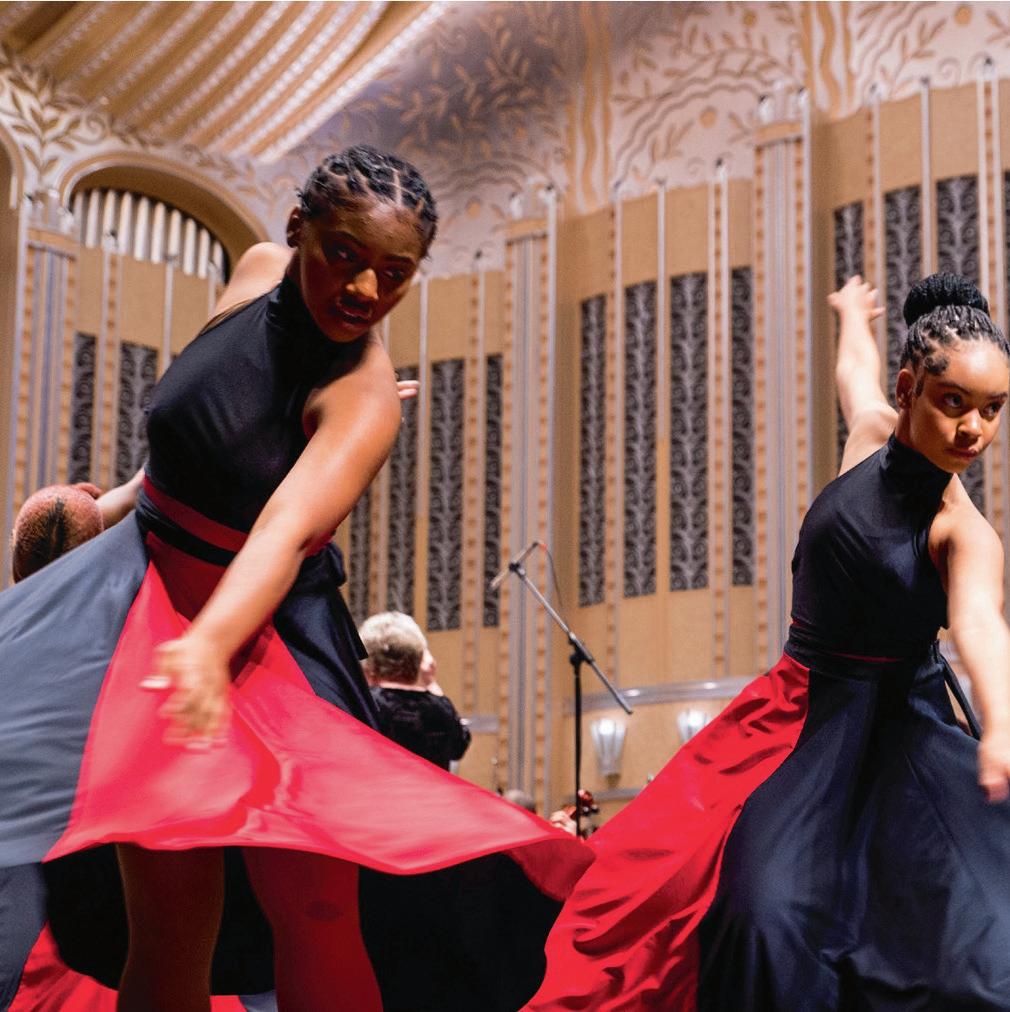

SETTING THE STAGE
for Success


We believe that all Cleveland youth should have access to high-quality arts education. Through the generosity of our donors, we have invested more than $12.6 million since 2016 to scale up neighborhood-based programs that serve thousands of youth year-round in music, dance, theater, photography, literary arts and curatorial mastery. That’s setting the stage for success. Find your passion, and partner with the Cleveland Foundation to make your greatest charitable impact.
(877) 554-5054
www.ClevelandFoundation.org/Success

Creative Arts Dance Academy
Tri-C









































































